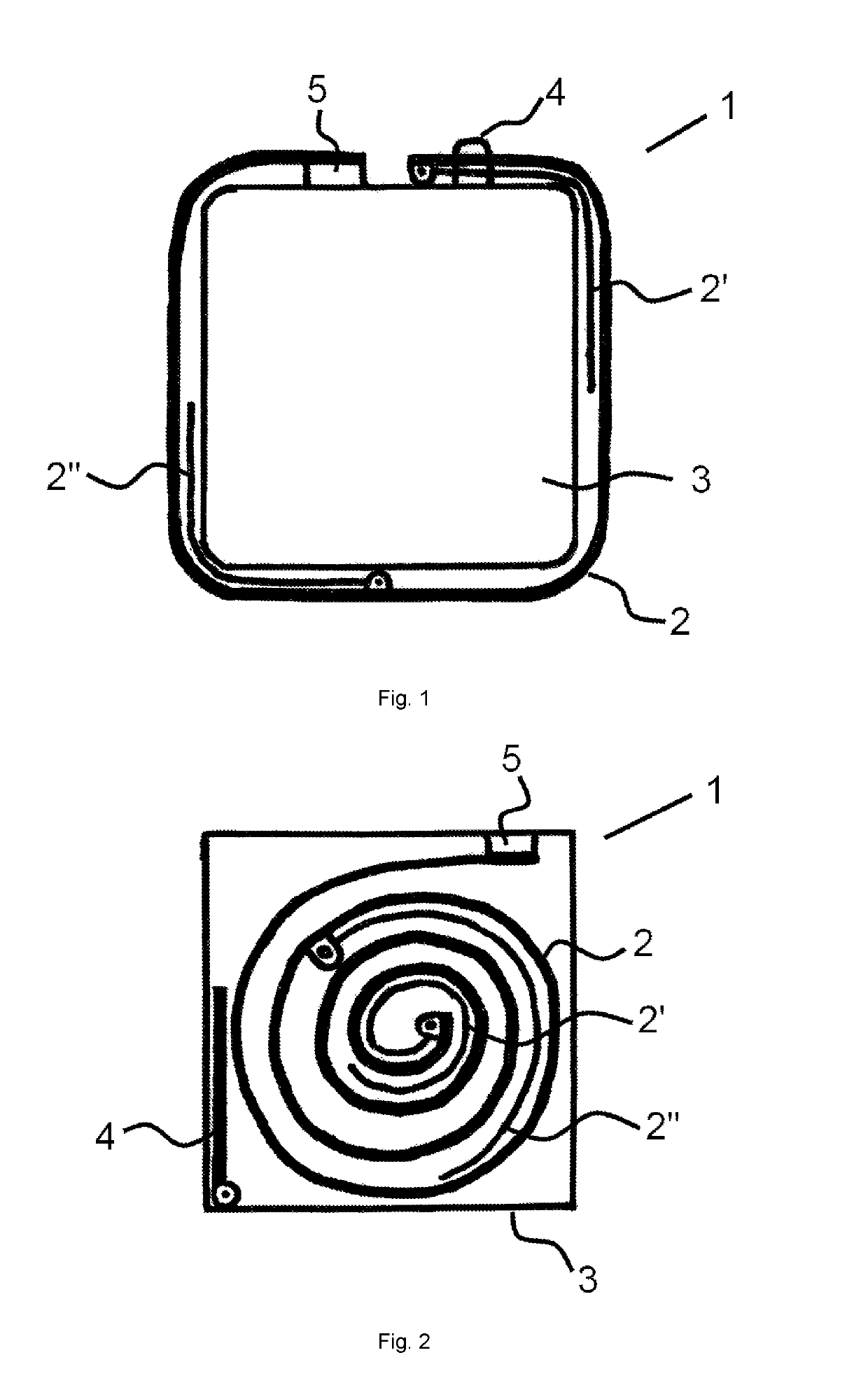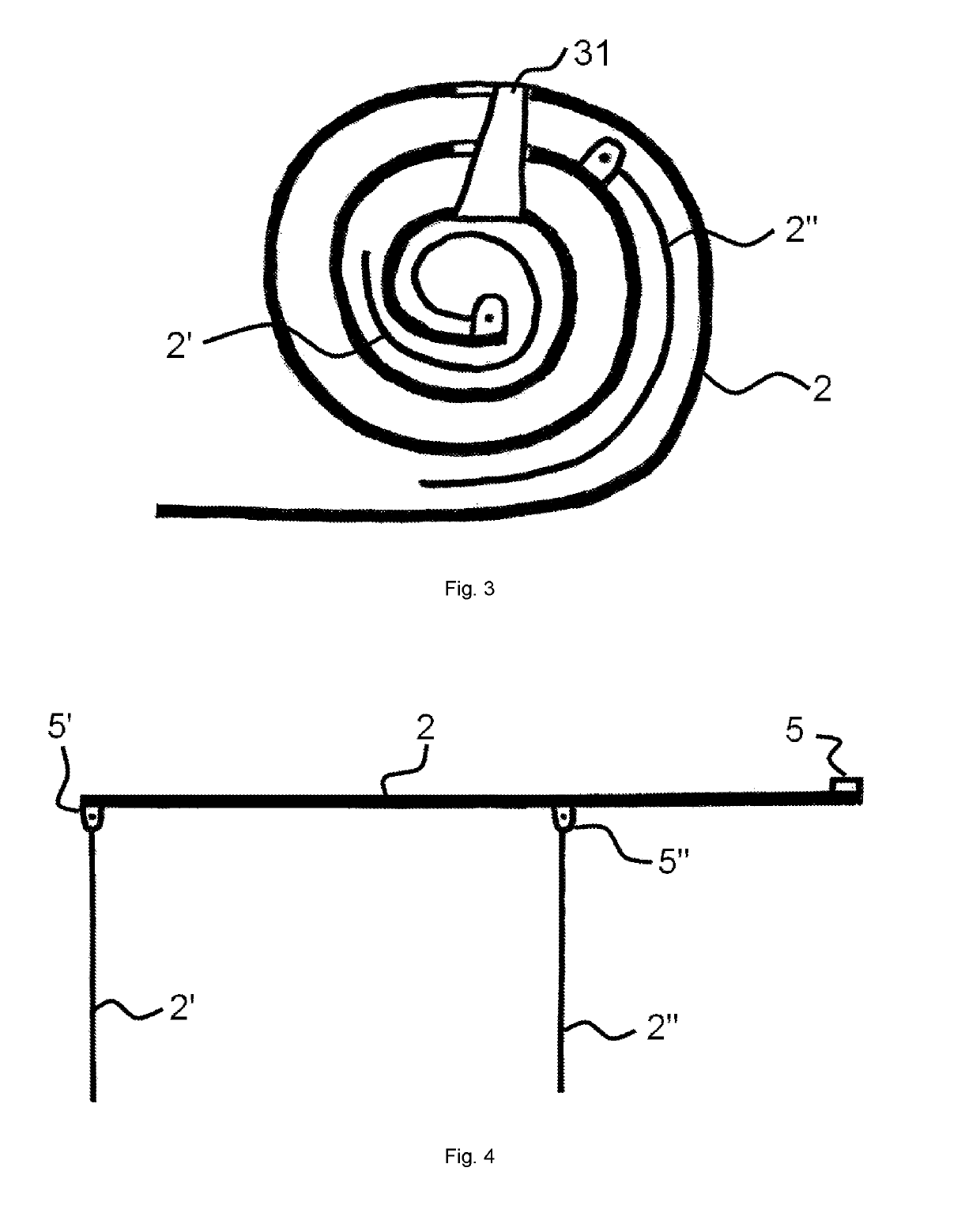Easyly deployable phased antenna for a spacecraft and system of such antennas
a phased antenna and spacecraft technology, applied in the direction of antennas, antenna details, antenna adaptation in movable bodies, etc., can solve the problems of large antenna, need for additional guiding structures and a broad transverse plane, and antenna cannot be placed and deployed on a nanosatelli
- Summary
- Abstract
- Description
- Claims
- Application Information
AI Technical Summary
Benefits of technology
Problems solved by technology
Method used
Image
Examples
Embodiment Construction
[0017]FIG. 1 and FIG. 2 presents methods of attachment of strip elements (2, 2′, 2″) of a phased array antenna (1) as designed for nanosatellites to the antenna (1) mounting chamber (3) for mounting the antenna (1) to a nanosatellite, but not limited to winding of the antenna (1) strip elements (2, 2′, 2″) around the mounting chamber (3), rolling of the antenna strip members (2, 2′, 2″) into a roll for placement inside the mounting chamber (3), and folding of the antenna strip elements (2, 2′, 2″) for placement inside the mounting chamber (3). In all cases, one end of the antenna transverse strip member (2) is fixed to the mount in the nanosatellite mounting chamber (3) by a fixing accessory (5) and the other end is free. The antenna (1) strip members (2, 2′, 2″) are securely held in a collapsed state occupying the least space volume and the monopole electrical vibrators (2′, 2″) and the transverse strip member (2) make an angle close to 0° at the line of attachment until the satell...
PUM
 Login to View More
Login to View More Abstract
Description
Claims
Application Information
 Login to View More
Login to View More - R&D
- Intellectual Property
- Life Sciences
- Materials
- Tech Scout
- Unparalleled Data Quality
- Higher Quality Content
- 60% Fewer Hallucinations
Browse by: Latest US Patents, China's latest patents, Technical Efficacy Thesaurus, Application Domain, Technology Topic, Popular Technical Reports.
© 2025 PatSnap. All rights reserved.Legal|Privacy policy|Modern Slavery Act Transparency Statement|Sitemap|About US| Contact US: help@patsnap.com



